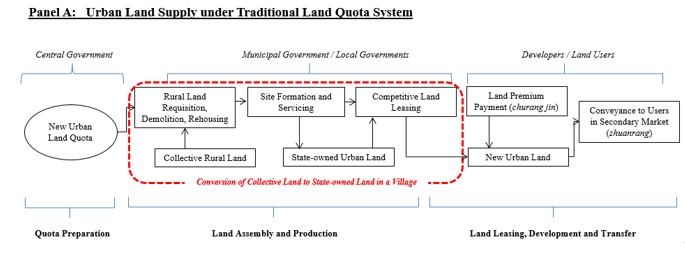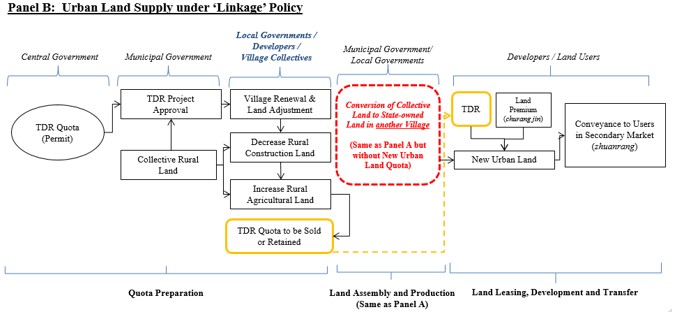Institutional Change and Diversity in the Transfer of Land Development Rights in China: The Case of Chengdu
Blog by Chen Shi and Bo-sin Tang
- Created
- 6 Jun 2019, 3:34 p.m.
- Author
- Chen Shi and Bo-sin Tang
- DOI
- 10.1177/0042098019845527
Abstract: https://journals.sagepub.com/doi/full/10.1177/0042098019845527#abstract
To solve the externality problems caused by excessive farmland conversion for urbanisation, China has implemented the ‘Linkage’ Policy (Zengjian Guagou). Under this policy, the consolidation of village land to increase agricultural land ‘produces’ land development rights (LDR) which can be transferred to provide new urban land elsewhere. This policy has not only connected the segregated rural and urban land markets of China by means of transfer of development rights (TDR), but also transformed its conventional state-dominated urban land production model in the process of urbanisation.
When the LDR of rural land become tradeable, New Institutional Economics suggests that the implementation of ‘Linkage’ Policy will induce institutional changes in the property rights arrangement and in the social relations amongst various players in the dual land market of China. Moreover, due to the ambiguous collective land ownership and the dominant role of the local government in the urban land market, market behaviour and market structure face tremendously high transaction costs in organising the TDR projects in China. Using Chengdu as a case study, this research examines the impacts of the new institutional environments on the governance of institutions, as well as the impacts of institutional changes on process efficiency, distribution of land revenue, and spatial development in China’s urbanisation.
First of all, Chengdu has implemented a number of important institutional innovations in reducing the transaction costs of a market mechanism for the transfer of rural LDR. These essential market tools enable the commodification of rural land assets and are of great significance on the choice of governance structures and transaction outcomes. Therefore, Chengdu has witnessed the emergence of the active participation of a diverse range of players, in addition to the local governments, in organising village land consolidation, reclamation, and villager resettlement with a view to ‘producing’ and acquiring transferrable LDR. Three models are identified in village project implementation, namely, government-led, market-invested and self-organised models. Nearly 30% of these village projects were initiated by developers or village collectives, who contributed their respective strengths and the resources they commanded to reduce transaction costs and improve process efficiency.
By analysing the interactions amongst stakeholders and the distribution of benefits, this study illustrates that through separation and commercialisation of LDR of rural land, the ‘Linkage’ Policy seems to have generated a positive outcome in returning some land revenue from farmland conversation to the rural sector. However, this policy also induces some negative institutional impacts on sustainable rural development and balanced regional development.
Read the paper on Urban Studies - Online First here





Comments
You need to be logged in to make a comment. Please Login or Register
There are no comments on this resource.